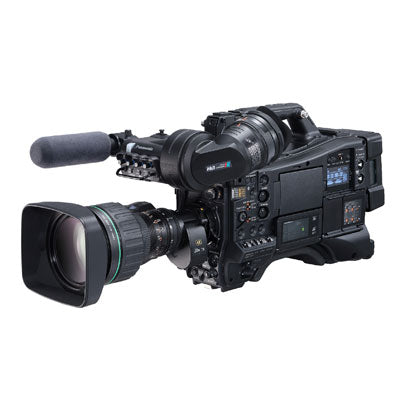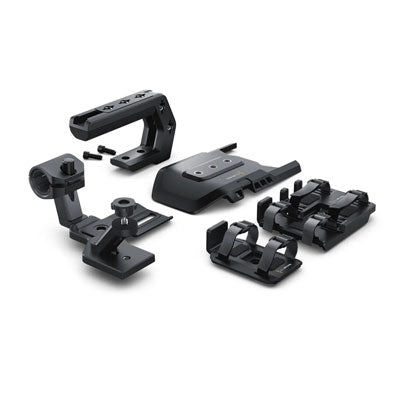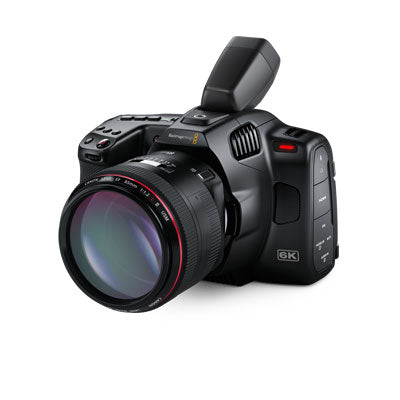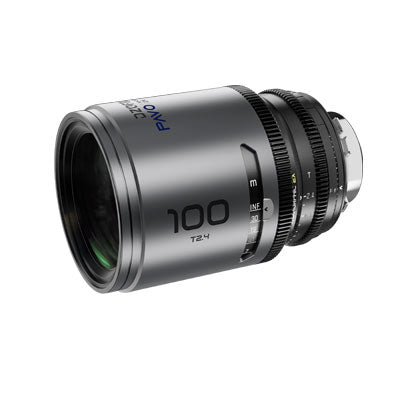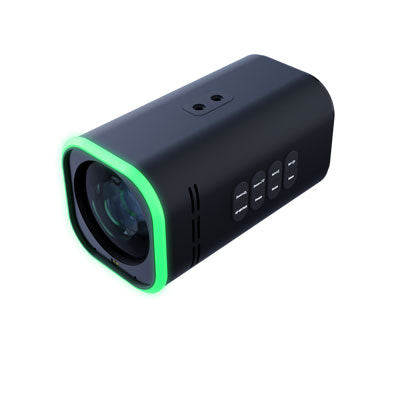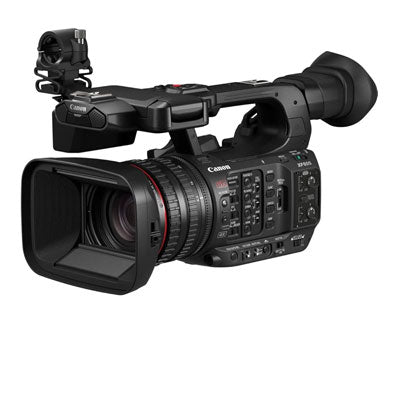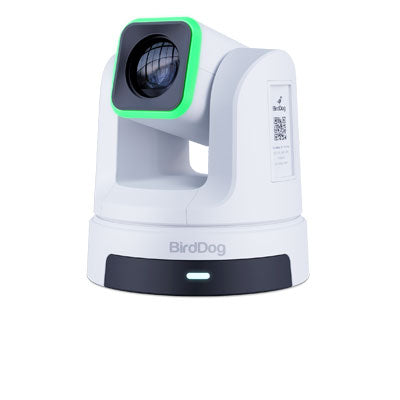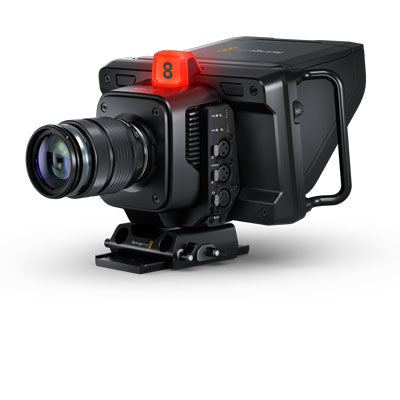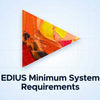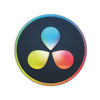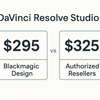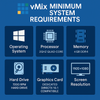DaVinci Resolve Studio Most Asked Questions & Answers

💡 Click here to buy DaVinci Resolve Studio for $325
DaVinci Resolve Studio – Top 100 FAQs
System Requirements
What are the minimum system requirements for DaVinci Resolve Studio?
- 64-bit operating system (macOS, Windows 10+, or CentOS Linux)
- At least 16GB of RAM (32GB recommended when using Fusion)
- GPU with at least 2GB VRAM, supporting OpenCL 1.2, Metal, or CUDA 10+
- Modern quad-core CPU or better
- SSD recommended for cache/scratch disks
What OS versions are officially supported?
macOS, Windows 10 or newer, and CentOS 7.3 (or BMD ISO variant). Windows 7/8 are no longer supported.
Q1: What is DaVinci Resolve Studio?
DaVinci Resolve Studio is the professional version of Blackmagic Design’s video editing software, offering advanced color grading, audio post, visual effects, and AI-powered tools.
Q2: How much does DaVinci Resolve Studio cost?
It costs $325 USD as a one-time purchase at Coremicro. Buy now.
Q3: Is the license perpetual?
Yes, once you purchase it, you own it permanently. No subscription required.
Q4: What's the difference between free and Studio version?
Studio includes AI tools, GPU acceleration, H.265 export, noise reduction, multi-user collaboration, and more codec support.
Q5: Do I need an internet connection to use Studio?
Only for activation. After that, you can use it offline.
Q6: How many computers can I use my license on?
You can use the license on up to 2 devices simultaneously. Activating a third will deactivate the oldest.
Q7: Where do I download DaVinci Resolve Studio?
From the Blackmagic Design support page: https://www.blackmagicdesign.com/support
Q8: Can I upgrade from the free version?
Yes, just install the Studio version and enter your activation key. Your projects remain compatible.
Q9: Does it work on M1/M2 Macs?
Yes, DaVinci Resolve Studio is optimized for Apple Silicon chips.
Q10: Is multi-GPU support included?
Yes. The Studio version supports multi-GPU acceleration on both macOS and Windows.
Q11: Can I use Studio on Windows and Mac with the same license?
Yes, the activation key works on both Windows and macOS. You can use it on two devices regardless of operating system.
Q12: Does DaVinci Resolve Studio include Fusion?
Yes, Fusion is built into Resolve Studio and includes full visual effects and motion graphics tools.
Q13: What AI tools are available in Studio?
Studio includes Magic Mask, Smart Reframe, Voice Isolation, Super Scale, Face Refinement, and more—all powered by the DaVinci Neural Engine.
Q14: Can I export in H.265 with the free version?
No, H.265 (HEVC) export is only available in the Studio version.
Q15: Does Studio support Dolby Vision?
Yes, Studio supports Dolby Vision, HDR10+, and other HDR workflows.
Q16: Is DaVinci Resolve Studio good for color grading?
Absolutely. It is considered one of the most powerful tools for professional color correction and grading worldwide.
Q17: Can I use custom LUTs in Studio?
Yes, you can import and apply 1D and 3D LUTs in the Color workspace.
Q18: What resolution does Studio support?
Studio supports up to 32K resolution and frame rates up to 120fps depending on your hardware.
Q19: Does it support collaborative workflows?
Yes, Resolve Studio supports multi-user collaboration over shared databases and storage for editing, grading, audio, and VFX simultaneously.
Q20: Can I install Studio on Linux?
Yes, there is a Linux version of DaVinci Resolve Studio, but it requires the Studio license and has specific hardware and driver requirements.
Q21: Can I use Resolve Studio with third-party plugins?
Yes, DaVinci Resolve Studio supports OpenFX and VST plugins, allowing third-party tools to integrate into the workflow.
Q22: Does Studio support ProRes encoding on Windows?
No, ProRes encoding is only available on macOS due to Apple licensing restrictions. You can decode ProRes on Windows.
Q23: Can I work with BRAW files in Studio?
Yes, DaVinci Resolve (both free and Studio) natively supports Blackmagic RAW (BRAW) files.
Q24: Is project collaboration available in the free version?
No, collaborative workflows are exclusive to the Studio version.
Q25: Does Studio include noise reduction?
Yes, DaVinci Resolve Studio includes temporal and spatial noise reduction tools in the Color page.
Q26: Is there a trial version of Studio?
There is no official trial version, but the free version includes most core features for evaluation.
Q27: Can I use Studio for live grading?
Yes, Studio supports live grading when used with compatible Blackmagic Design hardware such as UltraStudio or DeckLink.
Q28: Can Resolve Studio export DCP?
Yes, Studio can export Digital Cinema Packages (DCP) using the easyDCP plugin, which is integrated.
Q29: Is Fairlight audio better in Studio?
Yes, Studio supports more Fairlight tracks and buses, immersive formats like Dolby Atmos, and VST3 plugins.
Q30: Can I transcribe audio in Studio?
Yes, Studio 18 and later includes automatic transcription powered by the DaVinci Neural Engine.
Q31: Is subtitle generation automatic?
Yes, in newer Studio versions you can generate subtitles automatically from audio.
Q32: Can I track faces with Studio?
Yes, Studio includes AI-powered facial recognition and tracking features.
Q33: Can Studio output to professional monitoring equipment?
Yes, using DeckLink or UltraStudio hardware, you can monitor in HDR or SDI on calibrated displays.
Q34: Are there motion graphics tools in Studio?
Yes, the Fusion tab provides a complete compositing and motion graphics environment.
Q35: Can I use Resolve Studio for YouTube or social media?
Absolutely. It includes presets for YouTube, Vimeo, and Instagram exports.
Q36: Does Studio include LUT export tools?
Yes, you can generate and export custom LUTs from your grade in Studio.
Q37: Does Studio support camera LUTs and metadata?
Yes, Studio reads embedded metadata and camera LUTs from supported RAW formats.
Q38: What kind of storage is best for collaborative workflows?
Use fast, shared storage like NAS or SAN with a PostgreSQL project server for optimal collaboration.
Q39: Does Studio have GPU-based encoding?
Yes, it supports GPU-accelerated H.264 and H.265 encoding for faster exports on supported hardware.
Q40: Can I use Studio on a laptop?
Yes, as long as it meets the minimum system requirements. A discrete GPU is highly recommended for best performance.
Q41: Does DaVinci Resolve Studio support ACES workflows?
Yes, Studio supports the ACES color management system for consistent color reproduction across different platforms and devices.
Q42: Can I use Resolve Studio for film restoration?
Yes, Studio includes advanced tools like dust and scratch removal, stabilization, and grain control for restoration work.
Q43: Does Studio include audio loudness monitoring?
Yes, Studio includes Fairlight loudness meters that meet international standards such as EBU R128 and ATSC A/85.
Q44: Can I use Resolve Studio with a control panel?
Yes, Studio works seamlessly with Blackmagic's hardware control surfaces and other third-party panels via supported APIs.
Q45: Can I use Resolve Studio with RED or ARRI RAW?
Yes, Studio supports REDCODE RAW (R3D) and ARRIRAW formats with full metadata and debayering controls.
Q46: Can Resolve Studio deliver to broadcast standards?
Yes, Studio meets delivery standards including Rec. 709, Rec. 2020, and DCI-P3 for TV and cinema workflows.
Q47: Does Studio include keyframe animation?
Yes, you can keyframe nearly every parameter across editing, color, Fusion, and Fairlight timelines.
Q48: Can I apply transitions in Fusion?
Yes, Fusion provides both preset transitions and fully customizable node-based transitions.
Q49: Does Studio include optical flow tools?
Yes, Studio uses optical flow for smooth speed changes, stabilization, and retiming.
Q50: Is there a mobile version of Resolve Studio?
As of now, there is no mobile version. DaVinci Resolve Studio is available only for macOS, Windows, and Linux desktops.
Q51: Can I use DaVinci Resolve Studio for podcast editing?
Yes, the Fairlight page in Resolve Studio offers advanced audio tools suitable for editing, mixing, and mastering podcasts.
Q52: Does Studio support surround sound formats?
Yes, Resolve Studio supports formats like 5.1, 7.1, and Dolby Atmos for immersive audio post-production.
Q53: Can I import Adobe Premiere projects?
You can export your Premiere project as an XML and import it into DaVinci Resolve for further editing or color work.
Q54: Can I customize keyboard shortcuts in Studio?
Yes, Studio lets you fully customize keyboard shortcuts or load layouts from Premiere, Avid, or Final Cut.
Q55: What is Smart Reframe?
Smart Reframe uses AI to automatically track and reframe shots for vertical or square social media formats.
Q56: Can Studio render multiple timelines at once?
No, only one timeline can be rendered at a time, but you can queue multiple jobs using the Render Queue.
Q57: Does Resolve Studio support Blackmagic Cloud?
Yes, it integrates with Blackmagic Cloud for shared project libraries and remote collaboration.
Q58: What formats can I export in Studio?
Studio supports a wide range including MOV, MP4, MXF, EXR, TIFF, and more, with H.264, H.265, DNxHR, and ProRes encoding (macOS only).
Q59: Can I render audio-only files?
Yes, you can export WAV, AIFF, and other formats from the Fairlight page or Deliver page.
Q60: Is scripting supported in Studio?
Yes, Resolve Studio supports scripting via Python and LUA for automation and workflow customization.
Q61: Can I color grade live on set?
Yes, using Resolve Studio with Blackmagic hardware you can perform live grading during shoots.
Q62: Does Studio support anamorphic workflows?
Yes, it supports de-squeeze, framing guides, and delivery formats for anamorphic footage.
Q63: Can I do keying and compositing in Studio?
Yes, Studio includes Fusion’s node-based keying and compositing tools for green/blue screen and visual effects.
Q64: Does Studio include image stabilization?
Yes, Studio includes advanced stabilization options in both the Edit and Color pages.
Q65: Can I import multicam footage?
Yes, Studio supports automatic multicam syncing using timecode, waveform, or in/out points.
Q66: Can I burn subtitles into video?
Yes, you can burn in or export subtitle files separately from within the Deliver page.
Q67: Does Studio allow shared databases?
Yes, shared PostgreSQL project libraries are supported for team workflows and remote editing.
Q68: Can I use offline/online workflows?
Yes, Resolve Studio supports full offline/online workflows with media relinking and conforming.
Q69: Does Studio have facial recognition?
Yes, facial recognition is included to help organize clips by individual in the media pool.
Q70: Can I render video with alpha channel?
Yes, Studio supports alpha channel rendering using codecs like ProRes 4444 and DNxHR HQX.
Q71: Can Resolve Studio run on a networked license?
No, each installation requires its own license or activation key. Blackmagic does not offer floating licenses.
Q72: Can I customize export presets?
Yes, you can create and save custom export presets in the Deliver page for future use.
Q73: Can I animate graphics in the Edit page?
Yes, the Edit page supports basic motion graphics animation using keyframes and the Inspector panel.
Q74: Does Studio support external audio interfaces?
Yes, Resolve Studio supports ASIO and Core Audio interfaces for advanced input/output routing.
Q75: What is Super Scale?
Super Scale is an AI-powered upscaling feature in Studio that enhances lower-resolution footage to higher resolutions with improved detail.
Q76: Can I create Instagram reels in Resolve?
Yes, you can create vertical timelines, add transitions, and export directly in formats optimized for social media platforms.
Q77: Can I install Resolve Studio on an external SSD?
Yes, it is possible to install and run Resolve from an external SSD, though performance depends on the connection speed.
Q78: Does Studio support HDR scopes?
Yes, HDR waveform and parade scopes are available in the Color page when HDR settings are enabled.
Q79: Is training or certification available?
Yes, Blackmagic Design offers certified training programs and official textbooks for learning DaVinci Resolve Studio.
Q80: Can I export with multiple audio tracks?
Yes, Studio supports exporting multiple mono or stereo tracks or stems as part of broadcast or film delivery standards.
Q81: Can Resolve Studio auto-save projects?
Yes, auto-save and project backups can be configured in the Preferences under User Settings.
Q82: Does Studio include templates?
Yes, it includes titles, lower thirds, transitions, and Fusion templates. You can also import third-party ones.
Q83: Can I undo across pages?
No, undo actions are page-specific. Edits made in Color cannot be undone in Edit, and vice versa.
Q84: Can I color correct in real time?
Yes, with a powerful GPU, real-time playback with corrections and effects is possible.
Q85: Is Resolve Studio used in Hollywood?
Yes, it is widely used in professional post houses, studios, and film production pipelines globally.
Q86: Can I use custom fonts in Resolve?
Yes, any system-installed font is accessible in the Titles and Fusion Text tools.
Q87: Does Studio support audio ducking?
Yes, with keyframes or sidechain compression in Fairlight, you can automate ducking of audio.
Q88: Can I export animated GIFs?
No, Resolve does not natively support GIF export. Use a third-party tool to convert exported MP4s to GIF.
Q89: Is Fusion node-based or layer-based?
Fusion is node-based, allowing flexible and powerful visual effects workflows.
Q90: Can I change project resolution later?
Yes, project resolution and frame rate can be adjusted in Project Settings, although some settings are locked after edits.
Q91: Does Studio support real-time playback of effects?
Yes, with optimized media and GPU acceleration, many effects play back in real time.
Q92: What’s the best GPU for Resolve Studio?
A recent NVIDIA or AMD GPU with at least 8GB of VRAM is recommended for best performance.
Q93: Does Studio work with camera metadata?
Yes, Studio reads and displays metadata from supported RAW formats and clips.
Q94: Can I use Resolve for stop motion editing?
Yes, you can sequence still frames or use the Cut page for fast timing adjustments.
Q95: What is the Cut page used for?
The Cut page is a streamlined editing interface designed for speed and efficiency, especially for quick turnarounds.
Q96: Can I animate masks in Resolve Studio?
Yes, masks and windows can be keyframed for advanced effects and tracking.
Q97: Does Resolve Studio include proxy workflows?
Yes, proxy generation and relinking are built-in to improve editing performance on lower-spec systems.
Q98: Is batch rendering available?
Yes, you can queue and render multiple timelines or outputs from the Deliver page Render Queue.
Q99: Does Resolve Studio support GPU debayering?
Yes, Studio supports GPU-accelerated debayering for RAW formats like BRAW and RED.
Q100: Where can I get support for Resolve Studio?
Support is available through Blackmagic Design’s website, authorized resellers, forums, and training resources.
Support & Troubleshooting
Q101: What should I include when posting for support?
Include your DaVinci Resolve version, OS details, hardware specs, and a detailed description of the issue. Attach crash logs if possible.
Q102: What logs should I provide for troubleshooting?
Use the “Create Diagnostic Logs on Desktop” feature under the Help menu. For startup issues, use CaptureLogs.bat (Windows) or CaptureLogs.app (Mac).
Q103: How do I backup my project library?
Open Project Manager, select your library, click the backup icon, and save to a secure location. Back up before updating Resolve.
Q104: Can I use DaVinci Resolve on a system with antivirus/firewall software?
Yes, but some firewalls and antivirus programs may interfere with Resolve. Try disabling them temporarily if you encounter issues.
Q105: Why does Resolve crash or not start?
Your system might not meet the minimum requirements. Check GPU drivers, RAM, and system logs. Also try reinstalling the software cleanly.
Q106: Can I deactivate my license remotely?
No, remote deactivation isn’t supported. Activating a third time resets the previous two activations. Avoid sharing your key.
Q107: What’s the difference between local and network project libraries?
Local libraries are for single users and stored on the disk. Network libraries use PostgreSQL for collaborative access.
Q108: Can I install Resolve on Linux?
Yes, but only the Studio version is supported. Use the official CentOS ISO provided by Blackmagic for best compatibility.
Q109: What is the best way to optimize Resolve performance?
Use optimized media, cache render-intensive effects, close background applications, and upgrade GPU and RAM where possible.
Q110: Is technical support available for the free version?
No, support via phone and email is only available to Studio users. Free users should use the Blackmagic forums and manuals.










